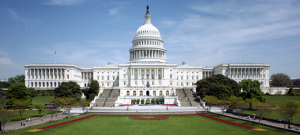In the age of modern terror, the US Capitol could be one of the most dangerous places in the world. I know that sounds silly, but just take a look at the two security scenarios that ended up unfolding within 24 hours of one another earlier this week. The feds indicted Michael Robert Hoyt, accusing him of a planned assassination of House Speaker John Boehner. Hoyt had previously been a bartender at Boehner’s country club in Ohio. He told the FBI and US Capitol Police that he easily could have slipped something into Boehner’s drink at the club. He talked about shooting the Speaker, claiming that he was responsible for Ebola. In addition, Hoyt says that Boehner was “mean” to him, a claim that Boehner refuses.
In the criminal complaint, authorities said that they were particularly worried about Hoyt because through his club work, he was familiar with Boehner’s “travel and leisure habits”. Hoyt lives on the east side of Cincinnati in the suburb of Deer Park. But by yesterday afternoon, the FBI and US Capitol Police were focusing their energy on the west side of Cincinnati, specifically Green Township. Here, they cornered in on Chris Cornell, who bought a pair of AR-15 semiautomatic rifles and 600 rounds of ammunition before he was arrested. According to court documents,Cornell had planned to come to Washington, detonate pipe bombs around the Capitol, and then shoot lawmakers and congressional aides as they fled the building for safety. However, Congressional sources claim that this plan was merely “aspirational”, and the public was never in any danger.
In the wake of this latest arrest, officials are on edge, considering it a grim reminder that the US remains a potential target for terrorists both within and outside of the US. Indeed, it’s said that terrorists only have to get it “right” once, while those who fight against terrorism need to be right 100% of the time. Whether it’s a lone-wolf attack or somebody working in collaboration with ISIS, being ever vigilant against potential terrorist attacks is essential. And since it isn’t a fortress like the White House, as well as its strong symbolic value, the US Capitol makes an ideal target for terrorists. While the Capitol Police screen everybody before entering the area, it’s still an open space. Over the years, there has been talk of constructing an “outer security perimeter” around the Capitol. So while everybody would have free access, they’d also have to go through security at a much greater distance away from the buildings, which could help make the Capitol more secure. However, with such a move, it’s important to not infringe on personal freedoms. It’s all about a balancing act.
